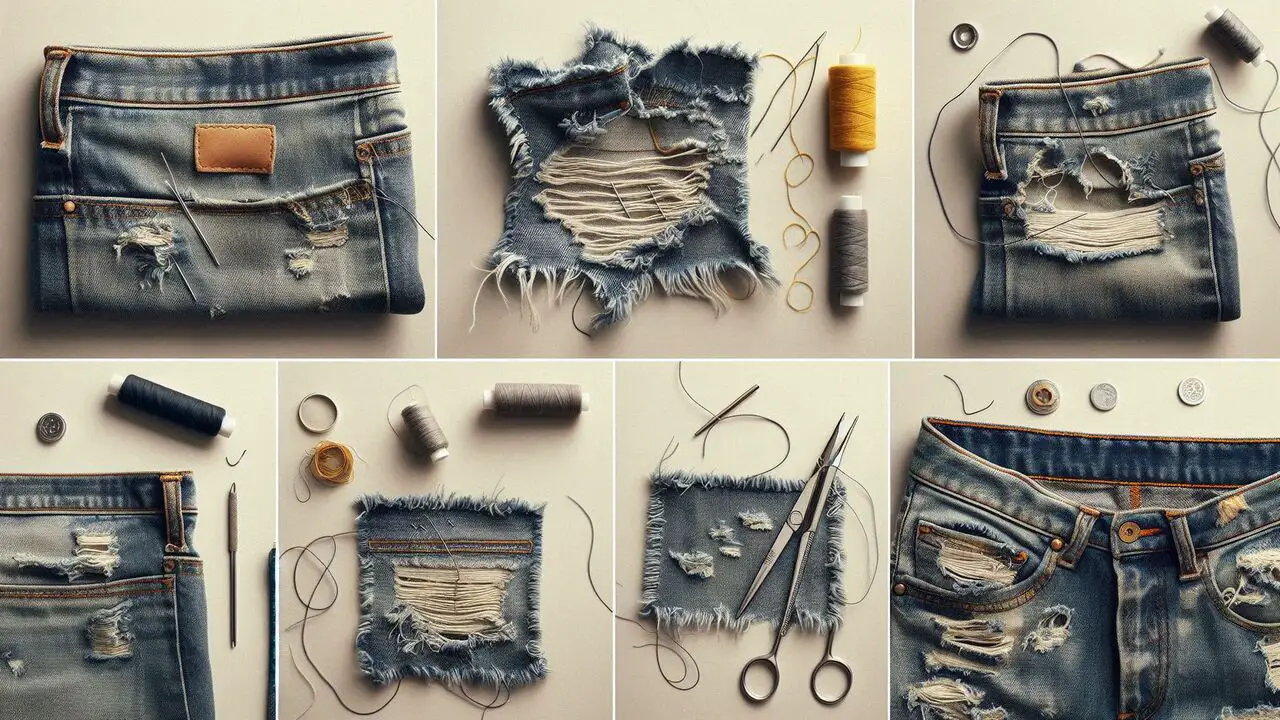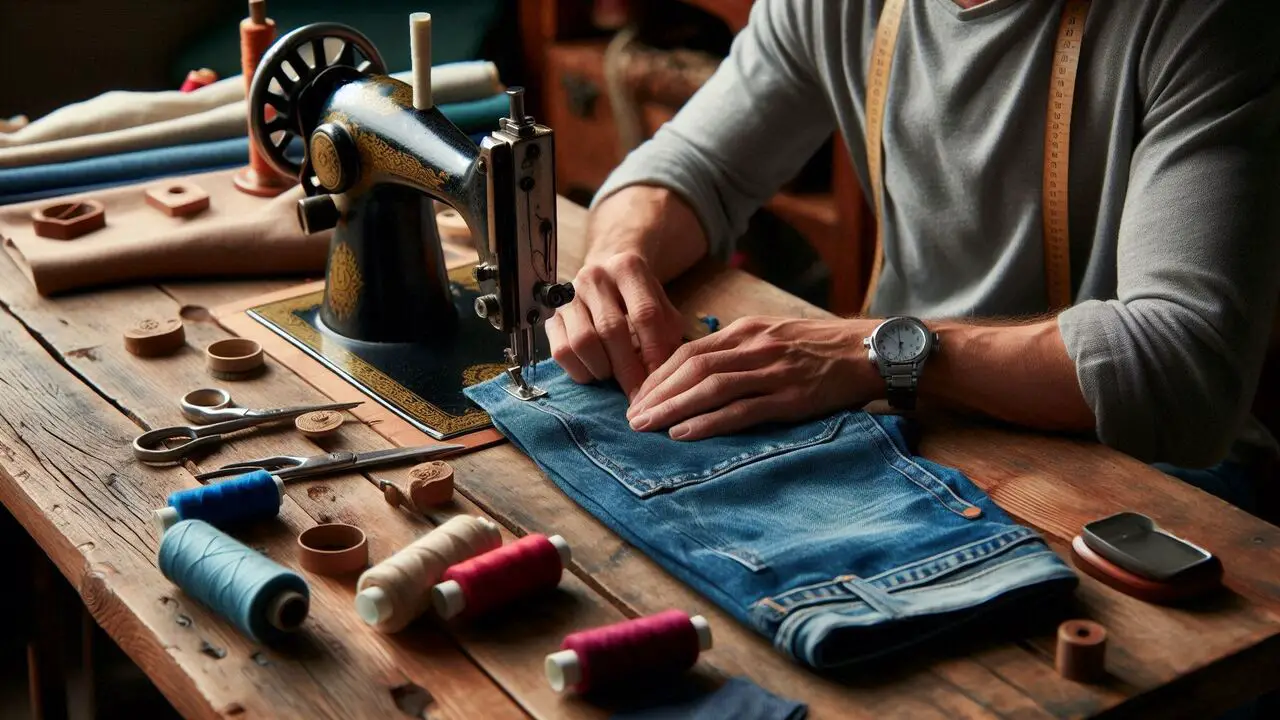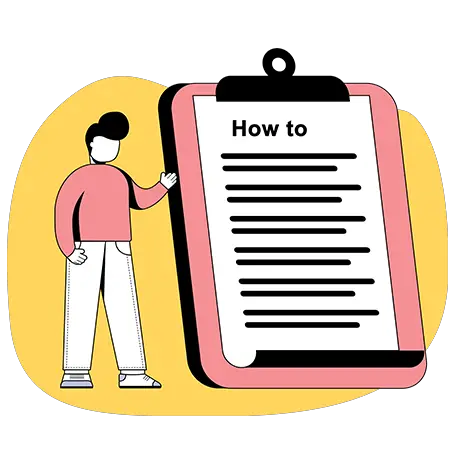Distressed jeans have been a popular fashion trend for decades, with their edgy and worn-out look adding a touch of rebelliousness to any outfit.
However, as fashionable as they may be, ripped and torn distressed jeans can quickly become a nuisance for those who wish to keep their clothing in pristine condition. The frustration of watching your favourite pair of jeans continue to rip and deteriorate can be disheartening, not to mention the cost and effort of having to replace them constantly.
Here, we’ll share some methods to stop distressed jeans from ripping more, including wearing them inside out, reinforcing the seams, and laundering them carefully.

5 Ways To Stop Distressed Jeans From Ripping More

Here, we discuss various methods to prevent distressed jeans from ripping further. We’ll cover techniques from reinforcing the distressed areas to proper washing and maintenance tips. Following these guidelines, you can keep your distressed jeans looking fashionable without sacrificing durability.
1. Reinforce With Fabric Patches

Turn the jeans inside out. Cut a fabric patch slightly larger than the distressed area. Place the patch over the distressed area on the inside of the jeans. Sew the patch in place with a needle and thread, ensuring the stitches are tight and secure. Turn the jeans on the right side out and check for reinforcement.
2.Use Iron-On Patches
Turn the jeans inside out. Cut an iron-on patch to fit the distressed area. Place the patch over the distressed area, adhesive side down. Use a hot iron to press the patch in place, following the manufacturer’s instructions. Allow the patch to cool before wearing the jeans.
3.Sew By Hand

Turn the jeans inside out. Use a needle and thread to sew around the edges of the distressed area. Make small, tight stitches to reinforce the fabric. Turn the jeans on the right side out and check the reinforcement.
4.Apply Fabric Glue
Turn the jeans inside out. Cut a fabric patch to fit the distressed area. Apply fabric glue to the patch and place it over the distressed area. Press the patch firmly and allow the glue to dry according to the manufacturer’s instructions. Turn the jeans on the right side out and check for reinforcement.
5.Use Interfacing

Turn the jeans inside out. Cut a piece of interfacing to fit the distressed area. Place the interfacing over the distressed area, adhesive side down. Use a hot iron to press the interfacing in place, following the manufacturer’s instructions. Allow the interfacing to cool before wearing the jeans.
How To Care For Distressed Jeans

Distressed jeans are a popular fashion trend but can be prone to ripping and tearing. To keep your distressed jeans in good condition and prevent further damage. Following these tips and carefully treating your distressed jeans, you can extend their lifespan and continue rocking this trendy fashion statement. Here are some tips for caring for them:
- Hand Wash Or Use The Delicate Cycle
- Repair Small Tears Promptly:
- Avoid Excessive Stretching
- Air Dry Instead Of Using The Dryer
Tips For Preventing Future Rips To Stop From Ripping More
- Reinforce Wear: Use patches or darning on visible signs of wear.
- Minimize Strain: Avoid activities that excessively strain the fabric.
- Choose Quality: Select durable, high-quality distressed jeans.
- Follow Care Instructions: Adhere to the manufacturer’s care guidelines.
- Professional Help: Have a tailor add extra stitching or patches.
- Rotate Pairs: Alternate between jeans to reduce wear on any single pair.
To maintain the integrity of your distressed jeans, reinforce any weak areas with a patch or iron-on denim patch to prevent further tearing. Be cautious with how you stretch the fabric, as excessive stretching can exacerbate existing rips.
When washing, turn your jeans inside out and use cold water on a gentle cycle to avoid weakening the fabric; steer clear of harsh detergents or bleach. Finally, air dry your jeans instead of using a dryer, as the heat can cause shrinkage and further weaken the fabric. These steps will help preserve your jeans and keep them looking stylish and intact.
Conclusion
Frequently Asked Questions
1.What Is The Difference Between Ripped And Distressed Jeans?
Ripped jeans have tears or holes in the fabric, while distressed jeans have a worn-out or faded appearance without actual tears or holes.
2.What Should Be Considered Before Ripping Jeans?
Before ripping jeans, several factors should be considered, such as the ankle length, leg shape, style (specifically straight-leg jeans or cropped jeans), waist size, thigh and crotch measurements, as well as the type of denim used (rigid denim, stretch denim)
. Additionally, the leg fit (tapered jeans, loose fit jeans, skinny jeans), rise (high rise jeans), and color (black jeans) should be taken into account. Proper consideration of these aspects will ensure the ripped jeans are comfortable, stylish, and fit.
3.Do Iron-On Patches Really Work For Repairing Jeans?
Iron-on patches can effectively repair distressed jeans, although results may vary. Choosing a patch that matches your jeans’ color and texture is important. Follow the instructions carefully for proper adhesion. However, remember that patches may not offer a long-term solution and may need to be reapplied or replaced over time.
4.Is It Normal For Ripped Jeans To Rip More?
Ans: It is normal for ripped jeans to rip more if not properly cared for. To prevent further tearing, reinforce the area around the rip with a patch or fabric glue. Avoid frequent washing in hot water. Consider professional repair if the tear becomes too large.











